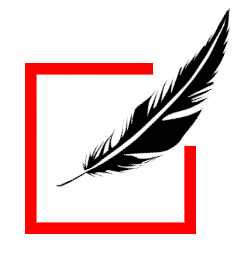Motion capture is defined as “The creation of a 3D representation of a live performance.”
The use of motion capture to animate characters on computers is relatively recent, it started in the 1970s, and now just beginning to spread.Motion capture (collection of movement) is recording the movements of the human body (or any other movement) for immediate analysis or decals.The captured information can be as simple as catching body position in space or as complex as a capture of the face and the deformation of the muscles.Motion capture for animation is the superposition of human movement on their virtual identities.This capture can be direct, such as the animation arm of a virtual function of movement of an arm, or indirect, such as that of a human hand with a more thorough as the effect of light or color.
The idea of copying human motion is of course not new.
To make the most convincing human movement, in “Snow White”, Disney studios design animation film on a film, play or real players. This method called “rotoscoping” has been used successfully since then. In 1970, when he began to be possible to animate characters by computer, Animationer has adapted traditional techniques, including the “rotoscoping”.
Today, technology is catching is good and diverse, we can classify them into three broad categories:
- Mechanical motion capture
- The optical motion capture
- The magnetic motion capture
Now although this technique is effective, it still contains some problems (weight, cost …) but against any doubt that the motion capture will become one of the basic tools of animation.
II. The different types of motion capture:
1. Mechanical Motion capture:
This technique of motion capture is achieved through the use of an exoskeleton. Each joint is then connected to an angular encoder. The value of movement of each encoder (rotation etc. ..) is recorded by a computer that by knowing the relative position encoders (and therefore joints) can rebuild these movements on the screen using software. An offset is applied to each encoder, because it is very difficult to match exactly their position with that of the real relationship.
2. The magnetic motion capture:
Magnetic motion capture is done through a field of electro-Magenta is introduced in which sensors are coils of sensors electriques.Les son are represented on a placemark in 3 axes x, y, z.To determine their position on the capture field disturbance created by a son through an antenna, then we can know its orientation.
The advantage of this method is that data captured is accurate and no further calculations, excluding from the calculation of position, is useful in handling. But any metal object disturbs the magnetic field and distorts the data of the magnetic capture.
3. Optical Motion Capture:
The capture is based on optical shooting several synchronized cameras, the synthesis of coordinates (x, y) of the same object from different angles, allows to deduce the coordinates (x, y, z). This method involves the consideration of complex problems such as optical parallax, distortion lens used, etc.. The signal thus undergoes many interpolations. However, a correct calibration of these parameters allows a high accuracy of data collected.
The operating principle is similar to radar: the cameras emit radiation (usually red and / or infrared), reflected by the markers (whose surface is composed of ultra-reflecting material) and then returned to the same cameras. These are sensitive to one type of wavelength and viewing the markers in the form of white spots videos (or grayscale for the latest cameras). Checking the information of each camera to determine the position of the marker in the virtual space.
III. Conclusion:
Although the motion capture requires some technical means, we can quite get what to do it yourself at home in a reasonable cost that can make your own short film.
Motion capture is a major step forward in the field of cinema as you can reprocess the image in a more simple, in fact, it is easier to modify an image captured a classic scene, all although this is too expensive.
But it is also a major asset in medicine, for example, it can be used to measure the benefit of a transaction via a recording of the movement of the patient before and after the operation.
 Binary Cipher
Binary Cipher